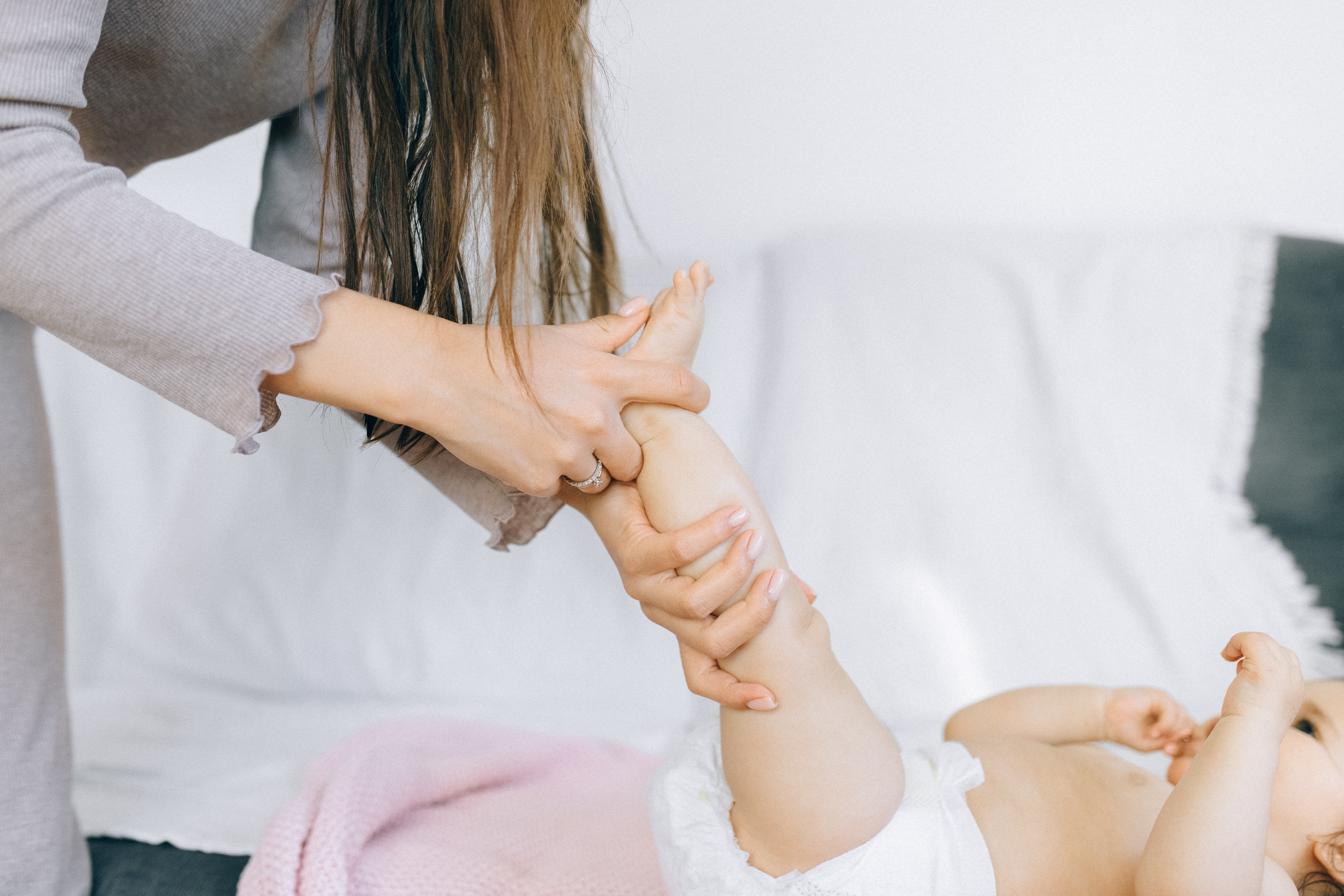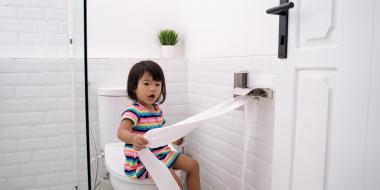The power of touch between a baby and their parent is something that is very sacred. It is something that has been shown to connect parents to their child, thus why skin-to-skin contact is highly promoted after birth. Infant massage is a great way to continue this connection between parent and baby. It gives you this bonding experience with your baby, but also provides many other benefits to your child.
Along with extra bonding time, benefits that can come from infant massage include improvements in your baby’s sleeping patterns, relief from constipation they may be experiencing, and an increase in overall relaxation.
Knowing Baby’s Cues & Other Considerations
Although massage for your baby is beneficial for you both, there are some considerations you must take before starting. Your baby has to be willing to participate; we never want to do something they don’t want or overstimulate them. Watching for cues of willingness is imperative during infant massage. We want our little one to enjoy this time and to see them smiling, wide-eyed, babbling, or talking.
Some signs of disengagement include crying, fussing, turning their head or body away, or bringing their arms and legs in to cover their body. If baby is disengaging from the massage, you can change your technique, the area you’re working on, the pressure, or stop the massage entirely. This is something you will learn to gauge.
Age
Babies from 0–3 months have shorter attention spans and can be overstimulated very quickly. It is best to keep these massage sessions simple (fewer techniques) and short. Start with a few massage techniques to the back and legs at this stage of life. As they grow older, you can then start applying more techniques and for slightly longer periods of time. By six months of age, you can do a full infant massage routine as long as they are willing.
Oil
We always recommend parents use any type of edible oil they have on hand to massage their baby. Babies have a tendency to put their hands and feet in their mouths, so using an edible oil (such as canola oil) is safer for them.
Setting Up for an Infant Massage
We want baby to be as comfortable as possible, so having a relaxing environment is very important. Choose a quiet and warm place, dim the lights, and make sure the time you do the massage is at a relaxing time for you and your child. We always want them to be in a state of quiet alert. We also suggest trying to do the massage at the same time of day every time.
You can always massage your baby on your lap if that is comfortable. You can also put two pillows side-by-side with the long end facing each other and place a sheet on top. Then, lay baby in the trough created by the pillows. As a safety precaution, make sure you are on the floor or on a surface that has room for baby to roll if they do choose to do so.
We also recommend having baby just in a diaper while doing the massage, but this can always be done over clothes too.
Massage Techniques
All techniques and strokes should be done in a slow, rhythmic fashion to promote relaxation with gentle pressure.
Start with your baby on their back and do a full body stroke without oil. With your palms, rhythmically glide hands over baby’s head, torso, and down to the feet. This can be repeated 3–5 times. After the full body stroke, we would start massaging legs then follow with arms, chest, abdomen, and then back.

Legs/Arms
- Using oil, hold baby’s leg or arm with one hand. With the other hand, glide your palm from the ankle or wrist up the outside and front of the leg or arm, then glide back down the inside and back of the leg or arm.
- Using oil and 2–3 fingers, make circular motions while gliding from ankle to hip or wrist to shoulder, and back down.
- Leg pumping for gas relief: Bring baby’s knees to their chest and back down; or you can do it alternatingly, like they’re pedalling a bicycle. Repeat this rhythmically 5–7 times.
Chest
- Using oil, glide both palms up the middle of baby’s torso and chest up to the shoulders. Then glide palms back down the sides of chest, making a heart shape. Repeat this rhythmically 3–5 times.
Abdomen
- Using oil, take one palm with it facing horizontally. Glide one palm downward on baby’s belly and follow with the right palm. Repeat this rhythmically 5–10 times.
Back
- Using oil, glide palms in a figure-8 pattern on baby’s back.
- Using oil and palms or 2–3 fingers (just like the legs and arms), make circular motions while gliding from low back to upper back.
- Finish with full body strokes, repeated 3–5 times.
Contraindications
There are times where infant massage is not suitable for your baby. Some of these instances include:
- Fever
- Infections
- Cardiac/circulatory conditions
- Lesions or open wounds
- Cancer
- Recent surgery or medical interventions
If you do have questions about contraindications and if massage is suitable for your child, always feel free to ask a Registered Massage Therapist or your family doctor.
Infant massage can be done by a Registered Massage Therapist as well, but I do recommend doing it at home yourself to have that wonderful bonding experience with your baby.
You May Also Like: What to Expect from Prenatal Massage, Ayurvedic Warm Oil Massage, Taking Care of Colic.






